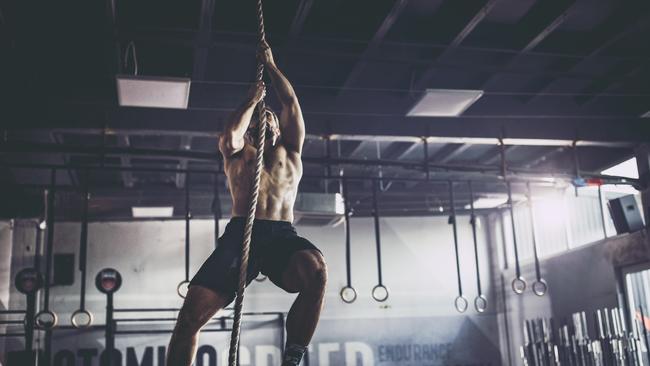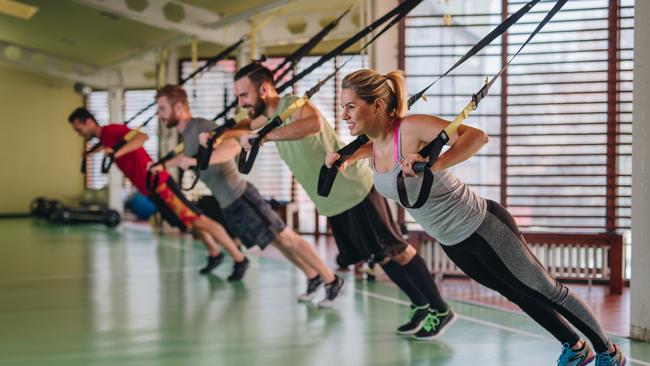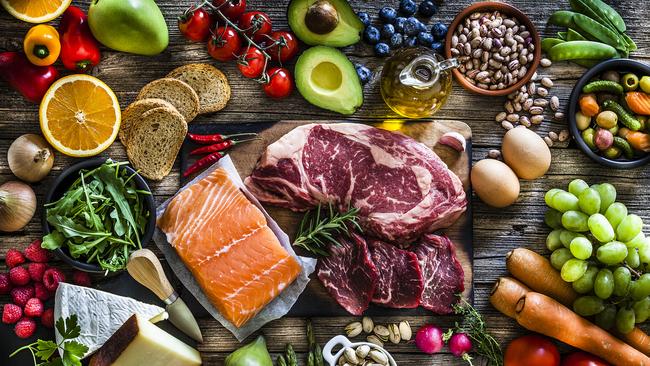Coronavirus: How to keep your strength during the pandemic
Inactivity depletes our muscles and can result in a catabolic crisis. Here’s what you can do to stop it.

Even if you started the last lockdown with good exercise intentions, that enthusiasm probably waned at some point. A study of 1062 people by European universities, including King’s College London and University College London, published recently in the Journal of Medical Internet Research, revealed what most of us suspected — there has been a downturn of daily steps across the board, but especially among the under-45s.
What concerns experts is not just the pounds that are accumulating on waistlines, but also an alarming loss of muscle. “Physical activity is such a potent stimulus for muscle growth that when it is limited or withdrawn, the result can be catastrophic for our muscles,” says Richard Kirwan, a researcher in the school of biological and environmental sciences at Liverpool John Moores University.
We all lose muscle mass once we pass our mid-thirties, initially at a rate that is barely noticeable, but accelerating to losses of up to 1 to 2 per cent per year as we pass beyond midlife. It matters because muscles are important not just for strength, mobility and aesthetic reasons, but because they influence our metabolism, bone strength and the body’s ability to keep blood sugar under control, offsetting conditions including diabetes and strokes.
“We think of the elderly and bed-bound as most at risk of the sudden and drastic muscle loss that is characteristic of a catabolic crisis, but it can happen to someone in their twenties,” Kirwan says. “We have evidence that a young person who becomes inactive can lose up to 4 per cent of their muscle mass in a relatively short space of time.”
Just how quickly this can occur was highlighted in May by a team of Italian scientists who warned that muscle wasting “is detectable after just two days of inactivity”. Sammy Margo, a chartered physiotherapist, says that she is increasingly seeing clients with muscles that are seriously deconditioned. “There has been a huge decline in muscle health,” she says. “It’s as if the ageing process of muscles has been sped up over the last six months.”
What, then, can we do about it?
1. Do seven minutes of exercise
Any activity is better than nothing for the muscles, but stress in the form of resistance is the crucial stimulus that causes them to adapt and increase in size. Weights are the gold standard. “If you can lift weights two or three times a week, that would be ideal,” Kirwan says. “But anything that works your body against a resistance is good.”
Research at the University of Bath found that a simple routine of five basic leg-strengthening moves - sit-to-stand from a chair, marching on the spot, seated knee extensions, standing knee bends, standing calf raises - each performed for a minute, twice a day, produced significant gains in muscle function and size in older people.
Walking up and down stairs while carrying a load of washing is another option, Margo says. For those who want something more structured, her recommendation is a daily seven-minute circuit of body-weight exercises. “There are dozens of apps that can be downloaded to talk you through a routine of squats, lunges, push-ups and step-ups,” she says. “These are the perfect starting point - add weights as you get fitter.”

2. Eat 25-40g of protein at every meal
Our muscles consist mostly of protein, so it makes sense that dietary protein intake is key to muscle maintenance. The Department of Health sets the recommended daily intake of protein at 55.5g for men and 45g for women. While it advises against adults consuming more than twice those amounts, more might be better. Kirwan suggests consuming 25-40g of protein - from lean meat, chicken, yoghurt or plant sources including peas or quinoa - with each main meal. Although beneficial for everyone, regardless of how much exercise they do, he says that it “is particularly effective when consumed in conjunction with a strength or resistance-training program”.
A review conducted at McMaster University in Canada and published in the British Journal of Sports Medicine two years ago found that people who ate more protein while weight training gained an additional 10 per cent muscle mass and 25 per cent muscle strength than those who ate less. However, this was true only up to a point. Consuming more than 1.6g of protein per kilogram of a person’s body weight - 101g for someone weighing 63.5kg (10 stone) - brought no additional gains. “If you consume too much extra protein, it will lead to weight gain,” Kirwan warns.

3. Consider a creatine supplement
Creatine is a naturally occurring substance found in meat and produced in the body. In one study published in the European Journal of Applied Physiology, women who took 5g of it daily and also followed a resistance-training program on three days a week for 12 weeks experienced a greater increase in the amount of weight lifted in a bench press, biceps curl and knee extension exercises than a control group. They also had greater gains in lean muscle mass and performed better in functional strength tests, such as getting up from lying on the floor. “Some studies show that taking creatine can be beneficial for muscles even without exercise,” Kirwan said. “If concerned about muscle loss, then creatine supplements are a safe option.”
4. Eat oily fish at least twice a week
Oily fish, such as mackerel, herring and salmon, is high in long-chain, omega-3 fatty acids that have been shown to help to keep the heart healthy, and in some studies to boost immunity. As such the NHS recommends eating at least one portion of oily fish a week, but more might be better for your muscles, particularly past the age of 40. “As we get older, our bodies don’t react as well to established signals for muscle growth,” Kirwan says. “This unwelcome effect is called anabolic resistance, but there is evidence that consuming fish oils and omega-3 fatty acids will help to override it.”
Last year researchers from the University of Southampton joined forces with a team of Canadian scientists to review the evidence on how fish oils might help to fight off muscle decline. Their study, published in the journal Frontiers in Nutrition, found evidence of “clinically relevant gains in muscle size and strength” in people who consumed omega-3 supplements and evidence that the fatty acids “alleviate the loss of muscle mass” after periods of inactivity. “Eating more oily fish is definitely a positive step,” Kirwan says. “But a supplement would also be useful.”

5. Keep walking every day
Many people are missing the incidental accumulation of daily steps that contribute to their overall activity. “People are moving from the sofa to the living-room floor to do their Pilates or yoga class and are not doing the walk to the car, from the car park to the studio, up the studio stairs and back home again that used to be the norm,” Margo says. “We are not walking around the office or taking a lunchtime trip to the shops. All of this activity really adds up.”
In one study, just two weeks spent walking less - a reduction from 10,000 to 1,500 steps a day - was found to lead to significant muscle loss and a substantial increase in body fat. According to Juliette Norman, a researcher in musculoskeletal biology at the University of Liverpool, and her team, the participants’ total lean muscle mass dropped by 0.36kg and leg muscle mass fell by 0.21kg, with increases of fat within the muscle tissue also reducing its quality.
“Don’t underestimate the impact walking can have on muscle strength,” Kirwan says. “The more you can do, the better.”
6. Get enough sleep
It is at night that human growth hormone, one of the primary compounds involved in muscle growth, floods the bloodstream and also when the body replenishes its stores of muscle glycogen.

“When sleep is disrupted, levels of stress hormones such as cortisol rise in the body, and excess cortisol has been associated with a drop in muscle mass,” Kirwan says. “Interesting new research also suggests our ability to grow muscle deteriorates when we are sleep-deprived, so it’s not just that we lose existing muscle mass, but that our bodies can’t build new muscle when we don’t get enough sleep.”
A lack of sleep also has a significant effect on appetite hormones. “It results in people not only feeling hungrier, but in them eating a lower-quality diet with too much fat and sugar that are not helpful to the muscles,” Kirwan says. Don’t fixate on a prescribed number of hours, but aim for as much sleep as you need to feel fresh when you get up.
THE TIMES





To join the conversation, please log in. Don't have an account? Register
Join the conversation, you are commenting as Logout